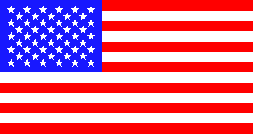
Oh, say can you see by the dawn's early light What so proudly we hailed at the twilight's last gleaming? Whose broad stripes and bright stars thru the perilous fight, O'er the ramparts we watched were so gallantly streaming? And the rocket's red glare, the bombs bursting in air, Gave proof through the night that our flag was still there. Oh, say does that star-spangled banner yet wave O'er the land of the free and the home of the brave? On the shore, dimly seen through the mists of the deep, Where the foe's haughty host in dread silence reposes, What is that which the breeze, o'er the towering steep, As it fitfully blows, half conceals, half discloses? Now it catches the gleam of the morning's first beam, In full glory reflected now shines in the stream: 'Tis the star-spangled banner! Oh long may it wave O'er the land of the free and the home of the brave! And where is that band who so vauntingly swore That the havoc of war and the battle's confusion, A home and a country should leave us no more! Their blood has washed out their foul footsteps' pollution. No refuge could save the hireling and slave From the terror of flight, or the gloom of the grave: And the star-spangled banner in triumph doth wave O'er the land of the free and the home of the brave! Oh! thus be it ever, when freemen shall stand Between their loved home and the war's desolation! Blest with victory and peace, may the heav'n rescued land Praise the Power that hath made and preserved us a nation. Then conquer we must, when our cause it is just, And this be our motto: "In God is our trust." And the star-spangled banner in triumph shall wave O'er the land of the free and the home of the brave!

Durante la Guerra de 1812, el 13 de septiembre de 1814, Francis Scott Key
visitó a la flota británica en la Bahía de Chesapeake para tratar de lograr
la libertad del Dr. William Beanes, quien había sido capturado después del
incendio de la ciudad de Washington, DC. Key logró la libertad de Beanes, pero
lo detuvieron a él en un barco esa noche, mientras atacaban al Fuerte McHenry,
una de las defensas de la ciudad de Baltimore. Al amanecer, fue tal su felicidad
al ver la bandera de Estados Unidos ondeando sobre el Fuerte, que empezó a
escribir un poema para celebrarlo. El título del poema fue "La Bandera de
Estrellas Centelleantes" y muy pronto éste logró amplia popularidad,
siendo cantado con la música de la canción "To Anacreon in Heaven".
El origen de la música no es muy claro, pero puede haber sido compuesta por
John Stafford Smith, un inglés nacido en 1750. "The Star Spangled
Banner" se convirtió en el himno nacional oficialmente en 1931, aunque la
Marina y el Ejército ya lo habían adoptado. La primera estrofa es la única
conocida y cantada generalmente.